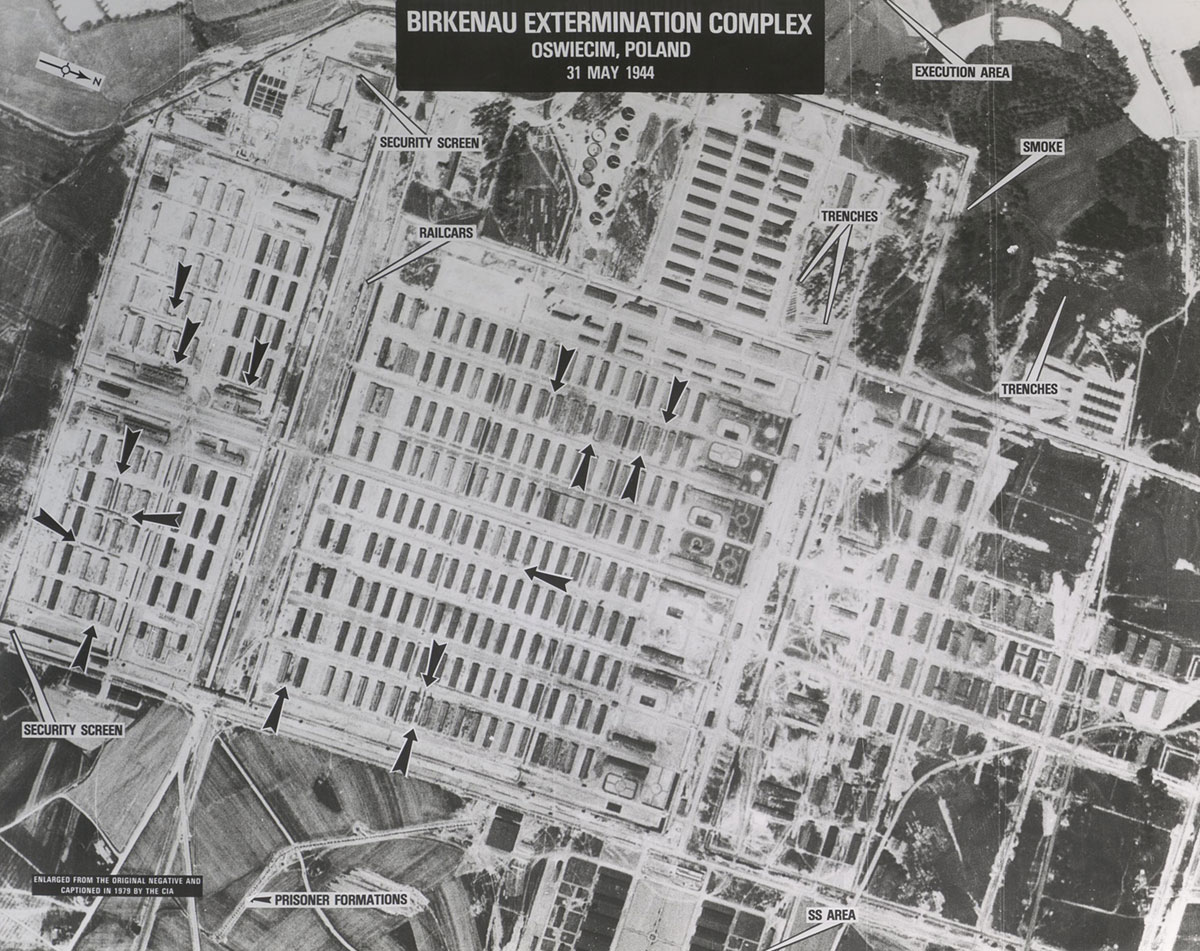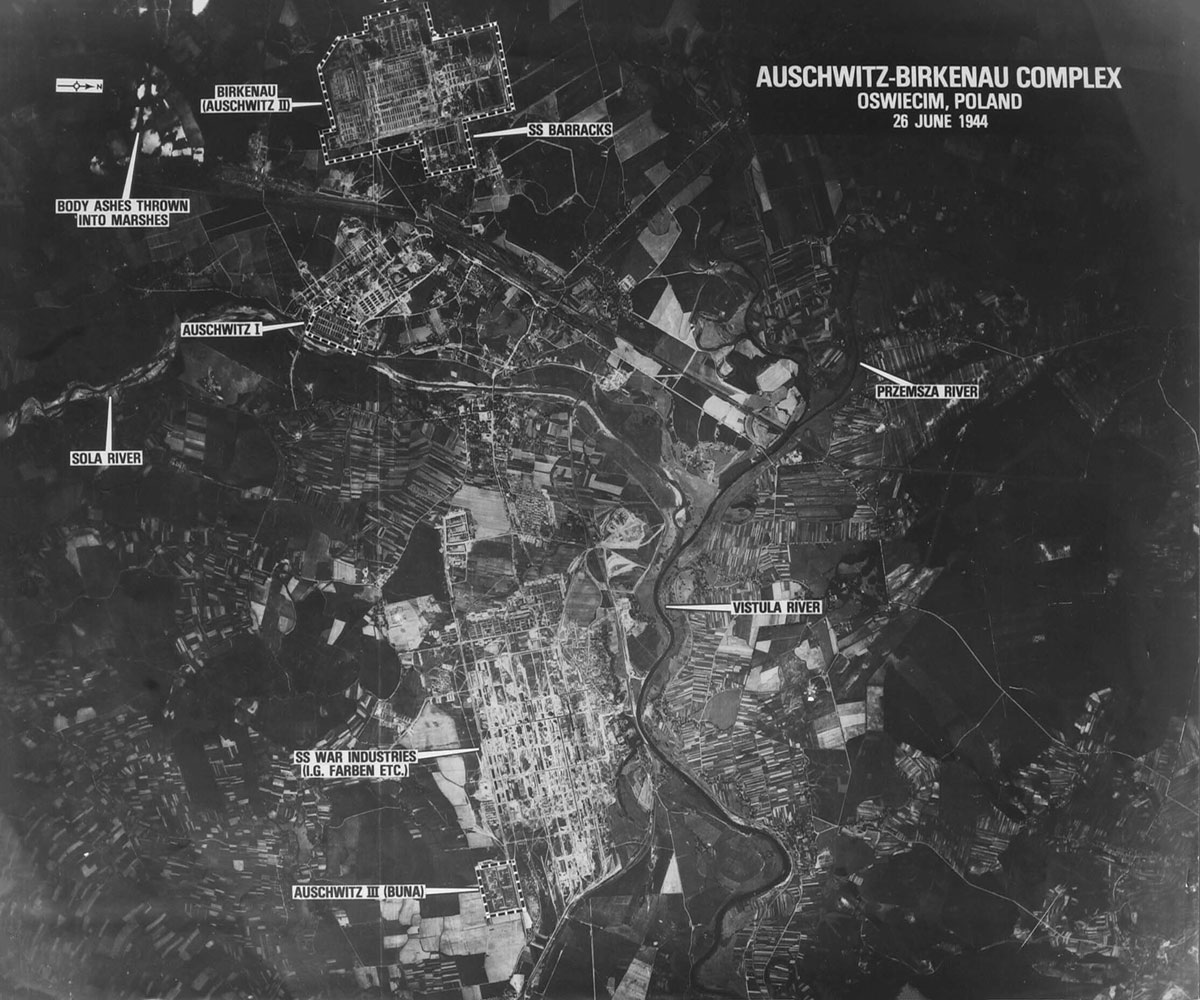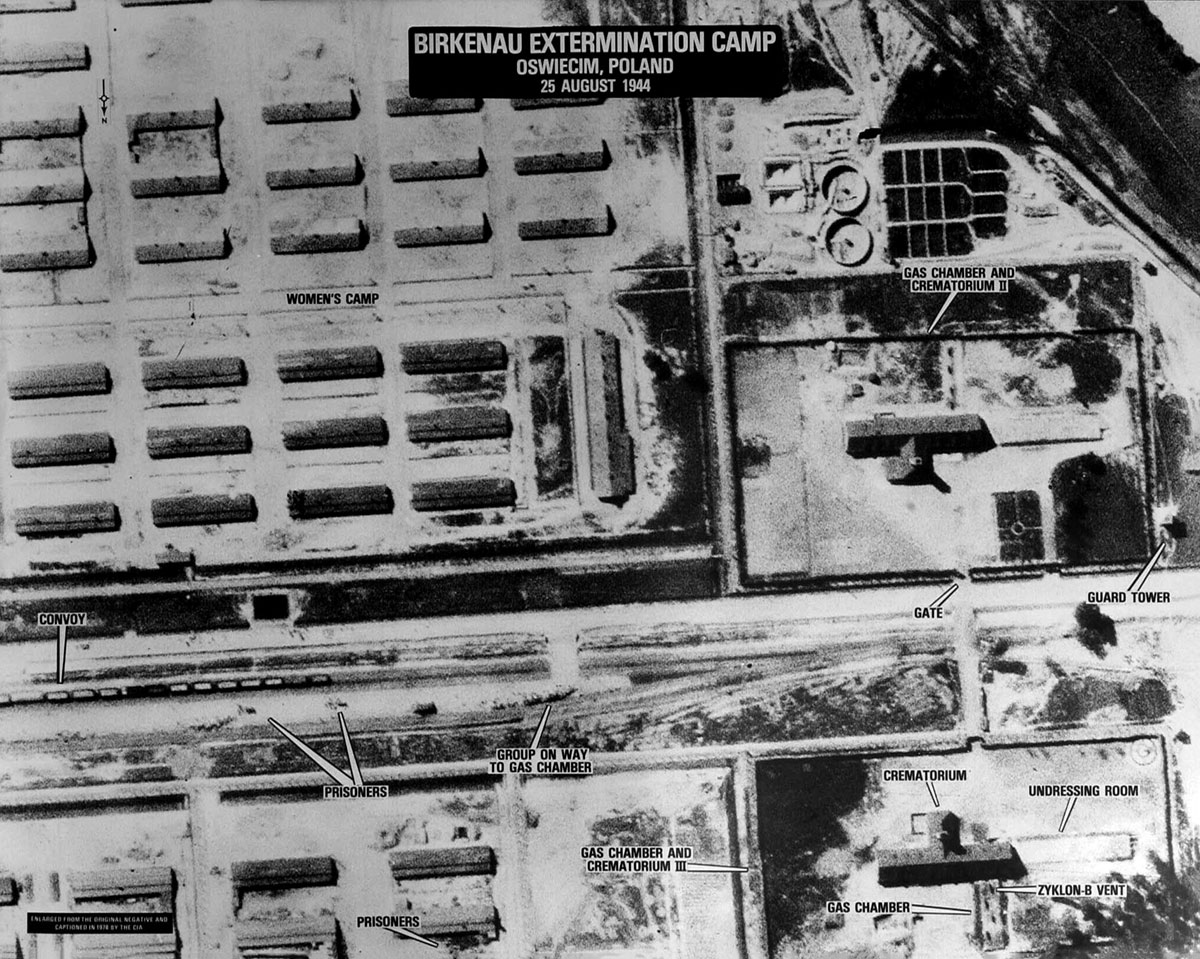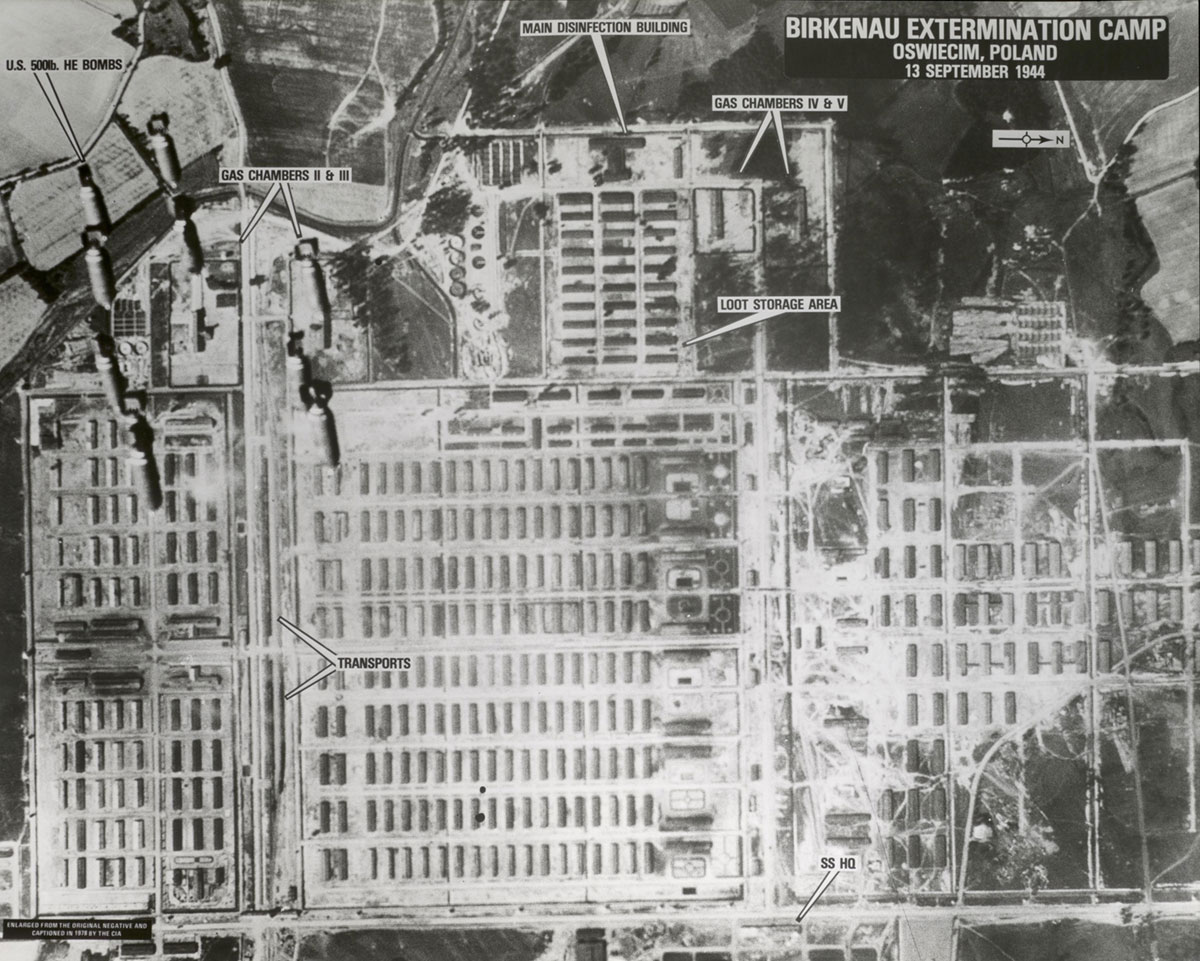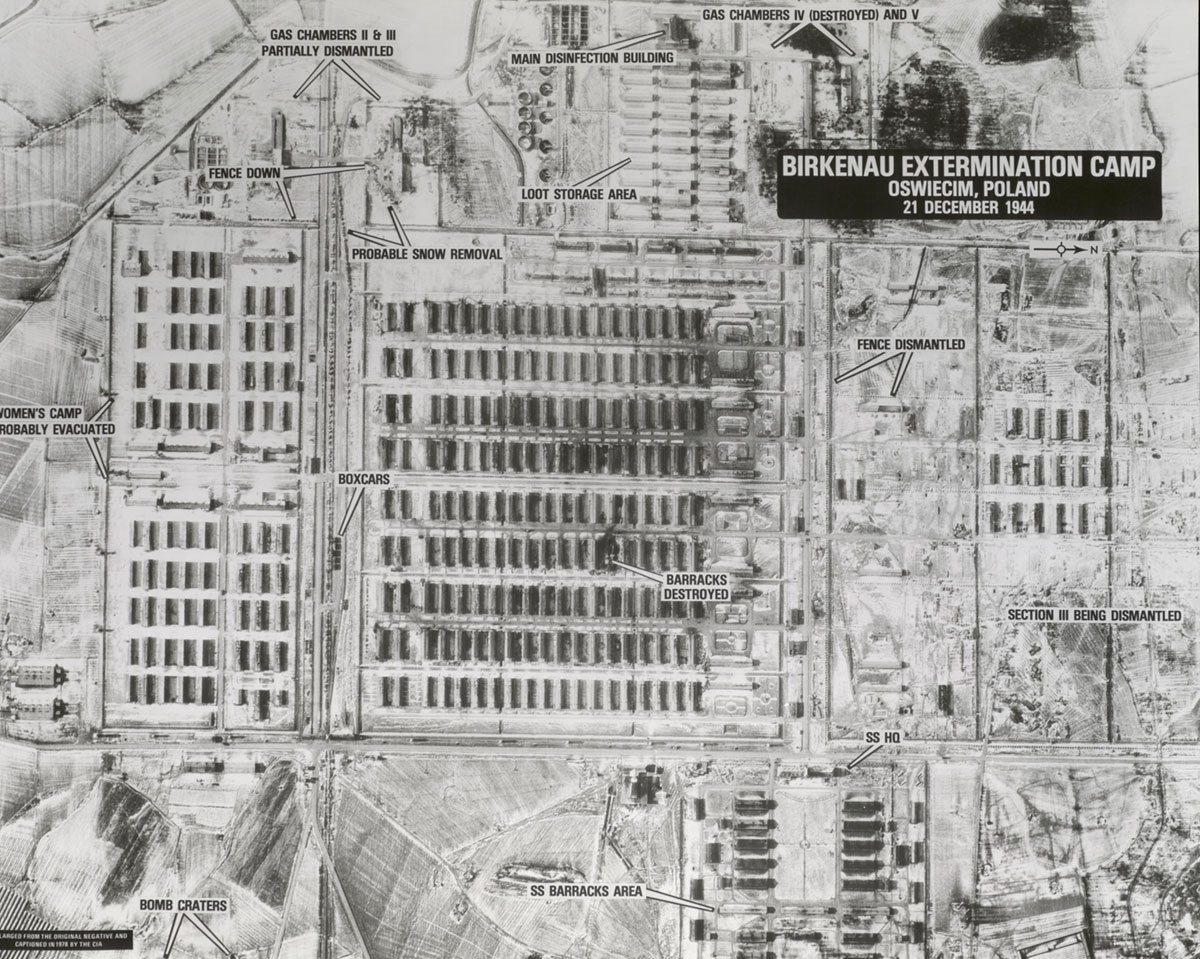Aerial photographs of Auschwitz taken by the Allied Air Forces during World War II were first exposed in 1978 by Dino Brugioni and Robert Poirer, two aerial photo-analysts who worked for the CIA. Using historical research material, they re-analyzed aerial photographs housed in the Defense Intelligence Agency Archives in Washington. Yad Vashem was able to acquire copies of some of these photographs in 1980 with Elie Wiesel’s help, and when former US President Carter visited Israel in that same year, he brought copies of the original film reels.
The Photo-Reconnaissance plane was actually looking for the nearby IG Farben war production factory and other war production facilities in the area. The photo material of this sortie was shared with the US 15th Air Force, which later bombed the IG Farben factory. Two CIA researchers reinterpreted the photo in 1978, and they inserted the captions and arrows on the photo. The arrows are pointing at several groups of inmates inside the camp. Also visible are several railcars next to the ramp. Smoke billowing from the chimney of Crematorium V indicates that people were exterminated in the gas chamber beneath it shortly before.
Yad Vashem Photo Archive, 964/3
The Allied Air Forces came to the Auschwitz area because of the important war industry located in this region of Upper Silesia (Polish territory which was annexed to the Third Reich in 1939). In early 1944, there were intelligence reports of a giant fuel and artificial rubber factory in Monowitz. On 4 April 1944, a Mosquito plane from 60 Photo-Recon Squadron of the South African Air Force flew out of Foggia base in Southern Italy to photograph the factory. It was the IG Farben factory at Monowitz, only 4km from Birkenau. In order to ensure complete coverage of the target, it was common practice to start the camera rolling ahead of time, and stop it slightly over time. As a result, the Auschwitz camp was photographed for the first time. During that same period, the Allies had commenced planning a comprehensive attack on the German fuel industry, and the Monowitz factory was high up on the list of targets. On 31 May, a second plane from 60 Squadron was sent to the area. This time, it also took three photographs of Birkenau from an altitude of 26,000ft, although the photo-analysts did not identify the camp. The photographs from this sortie show us the camp as it looked 3 days after the arrival of the deportation documented in the Auschwitz Album.
For various operational reasons, the bombing of the Monowitz factory was delayed but the Allied Air Forces continued to gather intelligence information about this factory and other installations in the area. The South African Mosquito planes photographed the factory and parts of the camp complex on 26 June, 25 August and 8 September.
Meanwhile, the US Army Air Force also started carrying out sorties in the area. The first American sortie to the Auschwitz area was carried out on 8 July by an F-5 Lightning plane from the 5th Photographic Reconnaissance Group of the 15th US Air Force, operating from Bari. The information gathered in this sortie and in the British sorties, was used to plan the first bombing mission of the Monowitz factory on 20 August, in which the factory was damaged, but was not destroyed. The second bombing mission was carried out on 13 September, and the photographs taken during the bombing by B-24 bombers of the 464th Bombardment Group include a photograph showing bombs being dropped over Birkenau. Afterwards, further sorties were carried out to estimate the damage, and the Germans’ progress with its repair. The 5th Photographic Reconnaissance Group’s Lightning planes also flew over the Auschwitz area on 29 November, 21 December, and finally on 14 January 1945 – only two weeks before the liberation of the camp by the Soviet Army.
It should be noted that the photo analysts never realized the significance of Birkenau, although Camp III, which was next to the IG Farben factory was identified as a concentration camp.
Further reading:
- Brugioni, Dino A. /Poirier, Robert G., The Holocaust Revisited: A Retrospective Analysis of the Auschwitz-Birkenau Extermination Complex, Washington DC, 1979.
- Neufeld, Michael J. and Berenbaum, Michael (ed.), The Bombing of Auschwitz: Should the Allies have Attempted it?, New York, 2000.
- James H. Kitchens, “The Bombing of Auschwitz Re-examined”, in The Journal of Military History, LVIII, April 1994, pp.233-266.
- Gilbert, Martin, Auschwitz and the Allies, New York, 1981.
- Martin Gilbert, “The Question of Bombing Auschwitz”, in The Nazi Concentration Camps, Proceedings of the 4th Yad Vashem International Historical Conference, Jerusalem, 1984, pp.417-473.
- Rondall Rice, “Bombing Auschwitz: US 15th Air Force and the Military Aspects of a Possible Attack”, in War in History, vol.6, no.2, 1999, pp.205-229.
